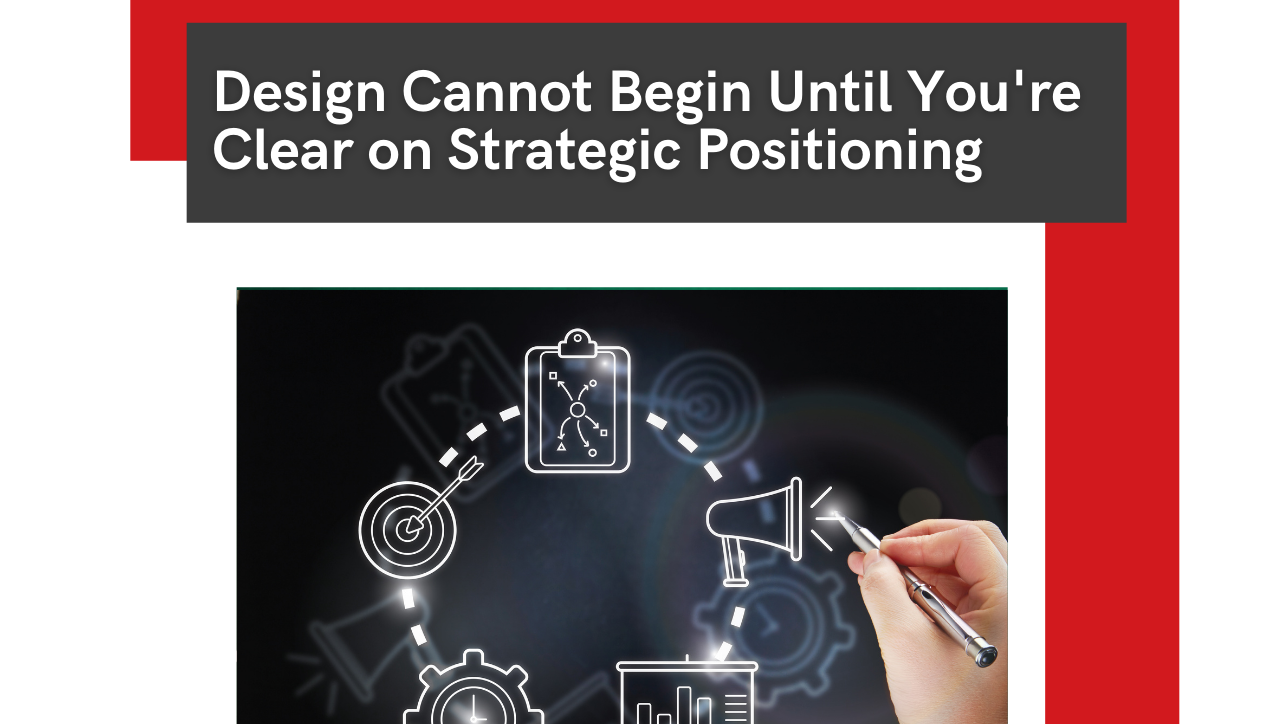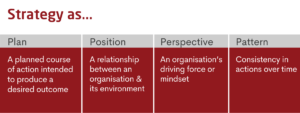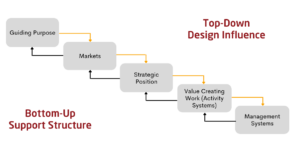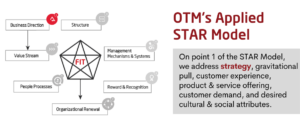5 minute read
Takeaway: There are four definitions of strategy (strategy as plan, position, perspective or pattern). In order to activate strategy and make it come to life, you need to first get clear on how you define it. Only then can you move forward and design your operating model to fulfill your strategic intent.
Strategy is an idea. It is intended to create efficiency and effectiveness by organising activity and aligning decisions. It is choice that says we will do these things but not those things. It defines how a business means to generate value and competitive advantage in a market. Business leaders cannot begin to think effectively about organisation design until strategy is clear. Otherwise, there is no objective for a design to fulfill.
If you’re interested in building a business that efficiently and effectively delivers products and services to your market, you must get clear about what you mean by strategy. This allows you to have effective conversations with your leadership team. You must also get clear about your strategic positioning. By doing these things, you align the effort of the business and set the conditions for the creative pursuit of a clear objective.
Strategy as Strategic Positioning
But there are many differing views on strategy and how it’s applied. You aren’t alone if you have an uncomfortable feeling that you don’t quite have the concept of strategy pinned down to your liking.
Several of the more familiar definitions of strategy are:
My favoured view in early design work is strategy as position. It sets the basic logic of how the business intends to generate superior value on its invested capital. This view of strategy is decidedly economic. Will I pursue operational effectiveness and be the low-cost producer in the market? Will I pursue product leadership and compete based on product/service differentiation and speed to market? Or, will I become intimately familiar with a niche market segment and focus my attention on being the best at meeting its differentiated needs?
All Strategies Must Eventually Lead to Activity
An integrated view of strategy is a set of reinforcing choices that defines the business aspirations, where the business will compete (enterprise strategy), how the business intends to win in the market (business strategy), the work it needs to be good at, and the management systems that will deliver that work. This model is useful because of its simplicity and orientation to work. It drives the strategy conversation to the work a business needs to be good at and management systems that it must develop to enable strategy. Without definition of work and systems, strategy remains a good idea waiting to happen.
Source: Adapted from Martin and Lafley, 2013
A business’ value creating work describe broad activity systems. Each company will invariably have many activity systems and may be good at many things. However, there is always a small set of work that must form the basis of a business’ strategic positioning.
For example, if your strategic position is based in product/service differentiation then the ability to understand the market, innovate, and create demand must be core work where significant competitive advantage and value is generated. Otherwise, you can’t effectively compete in your competitive position and your economic returns will be smaller than they otherwise might be.
Organisation Design Creates Competitive Advantage
Organisation Design cannot begin until we are clear about strategy and the core value creating work needed to deliver it. As previously noted, successful competition is enabled by the integrated set of choices that not only define how the business intends to create value in the market (strategic positioning) but also the work and supporting systems that enable a competitive position.
ON THE MARK always begins a design process by looking at strategy. Experience shows that it’s common for a leadership team to be misaligned in its understanding of organisational strategy. There is no judgement in this statement. It’s simple recognition that there is ample source of confusion about what strategy means. It’s also recognition that many businesses are caught between strategic positions and must clarify how the business will compete in the market.
Without a shared understanding of this core issue, reaching effective and apolitical decisions about how to organise work and set up the operating model is difficult and time-consuming, or impossible. Leaders must align to a common design objective.
Read part 2 of this blog series to learn more: The Integration of Strategy, Capability, and Operating Model.
Let’s Talk!
Chris Furnell and Daniel Schmitz are Consultants at ON THE MARK.
OTM is the leading global boutique organization design consultancy with offices in the USA and UK. With over 450 successful redesigns and operating model modernizations completed, OTM is the owner of the industry’s most integrated, comprehensive, and holistic organization design solution. OTM enables its clients to realize their future ambitions.






